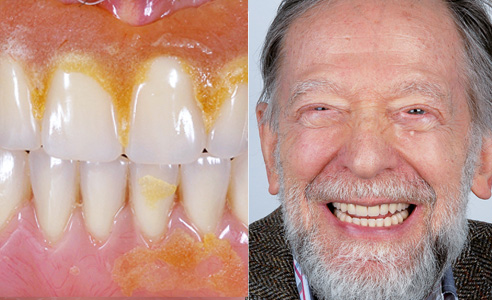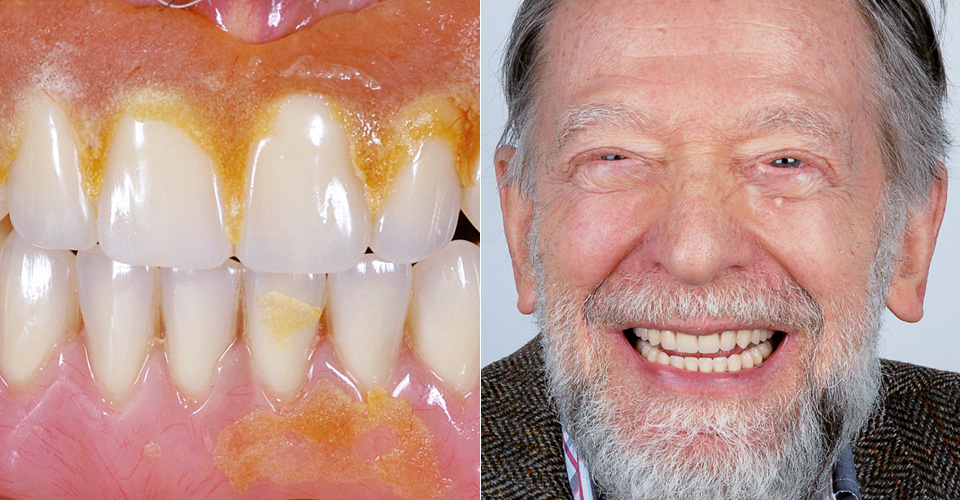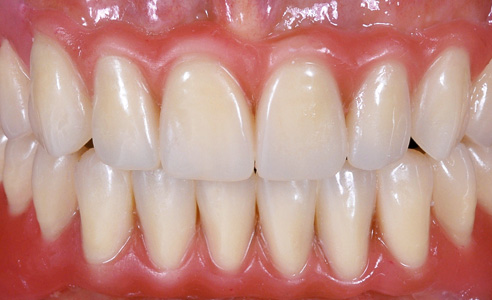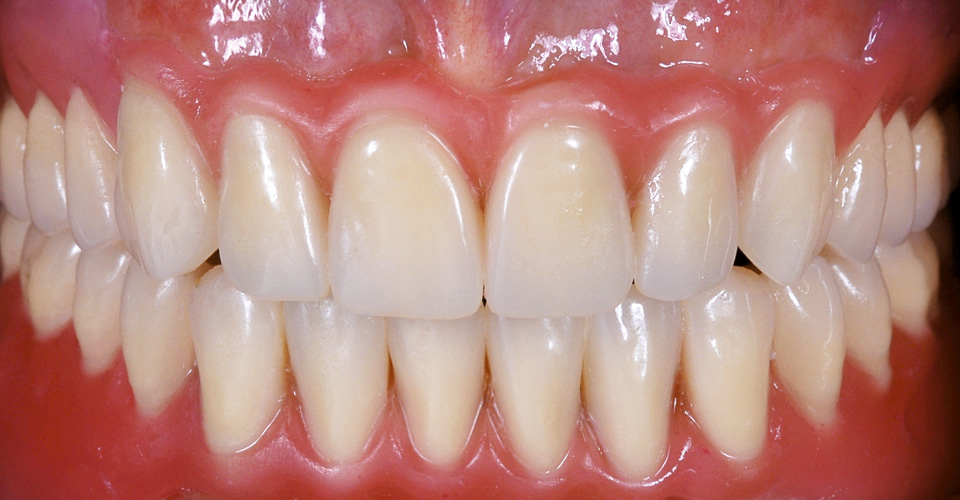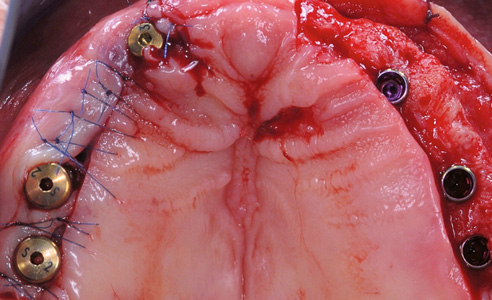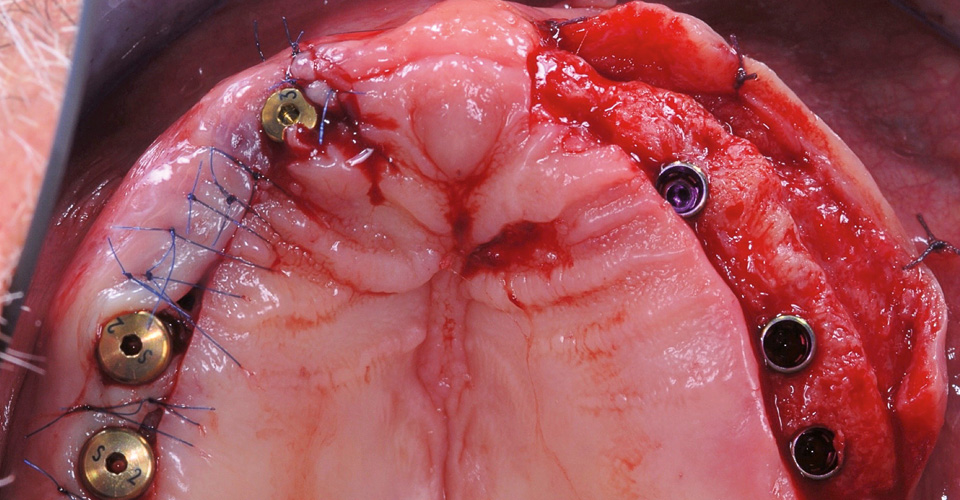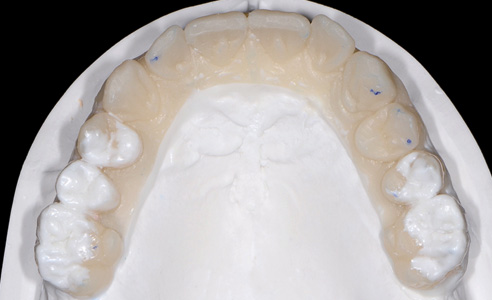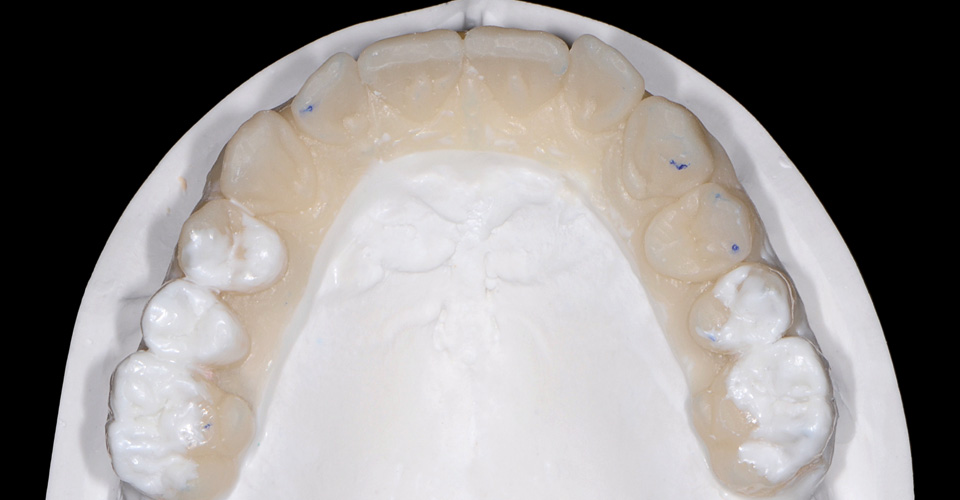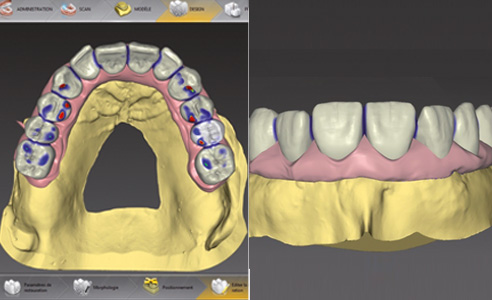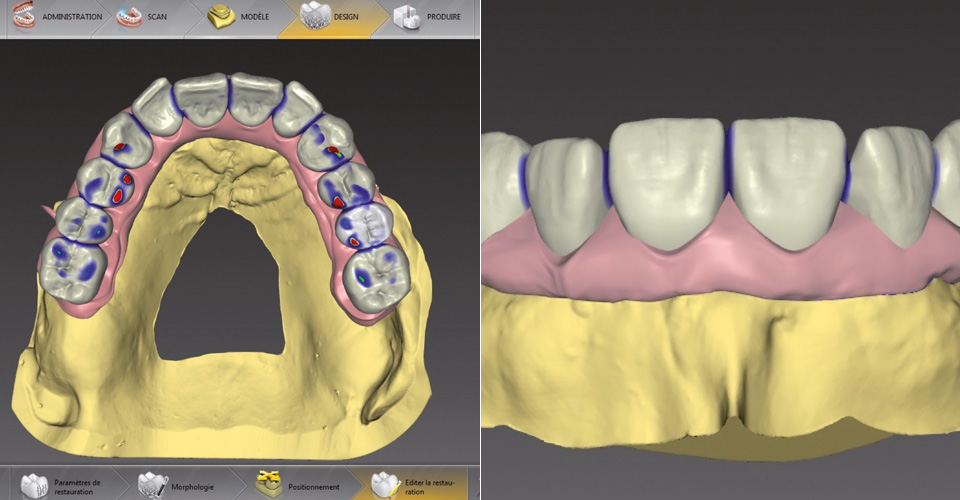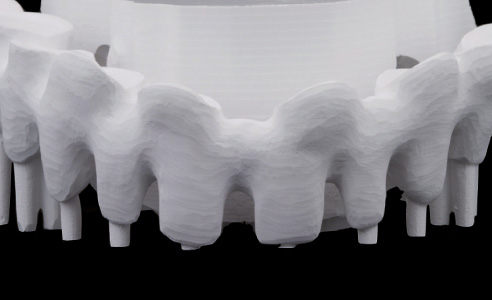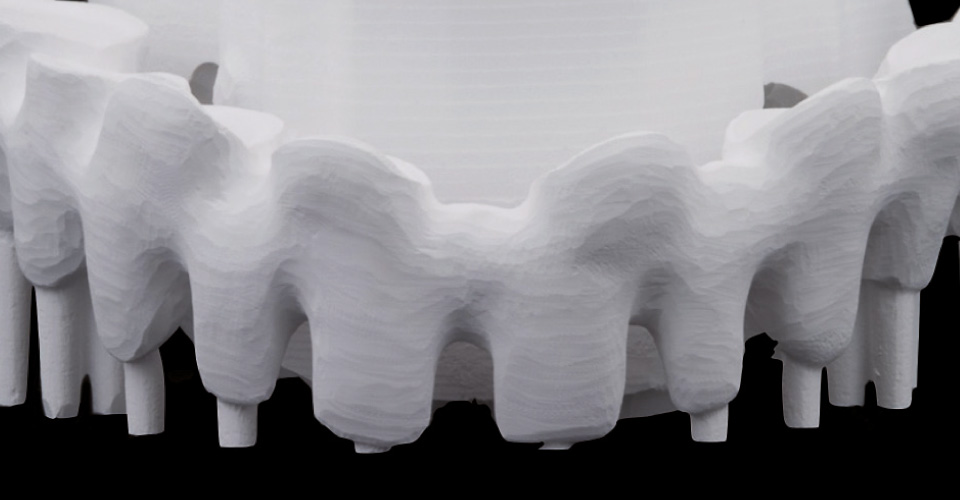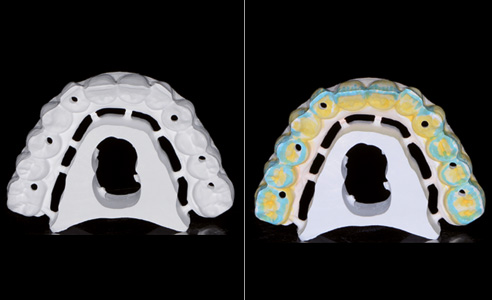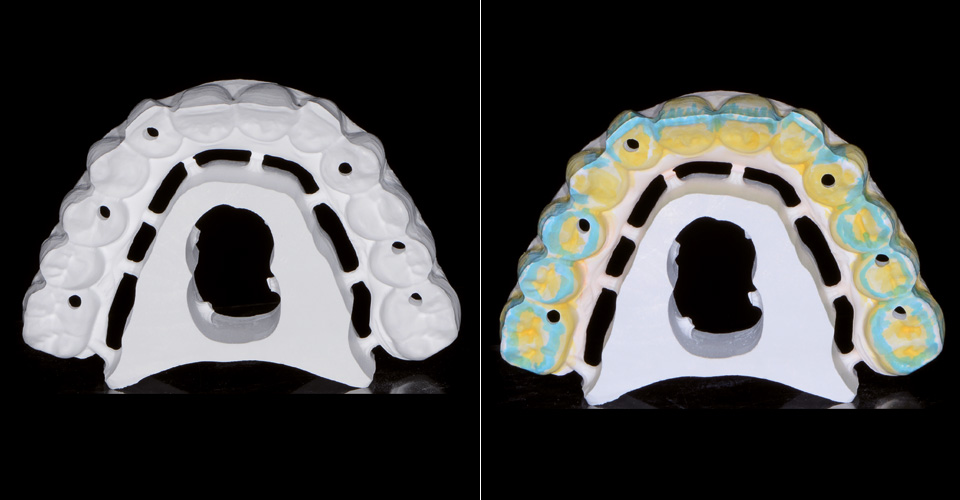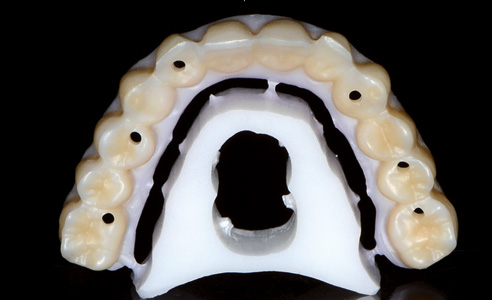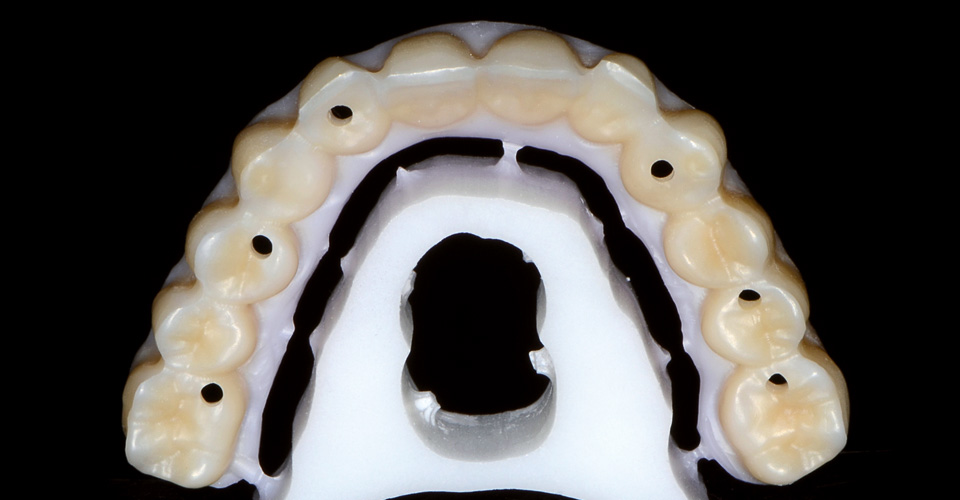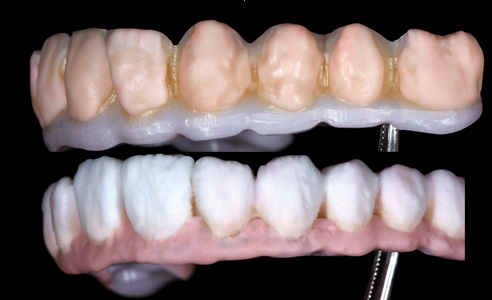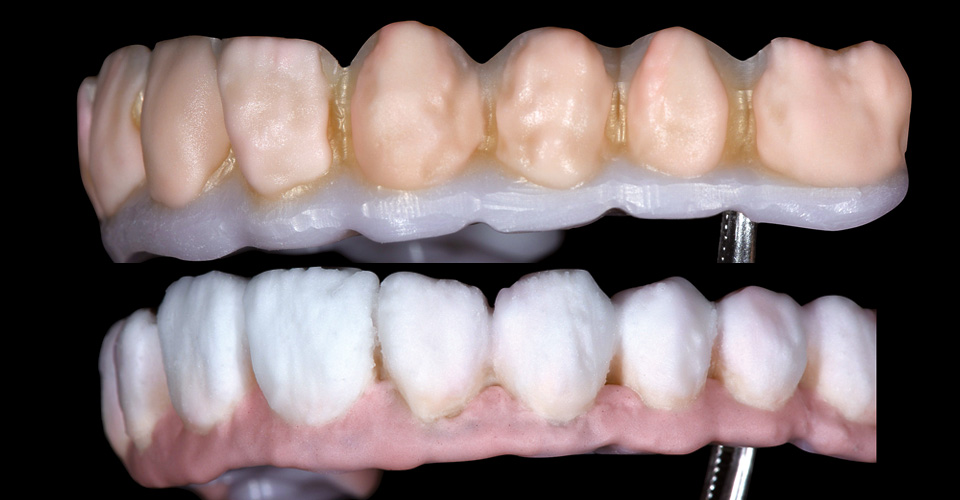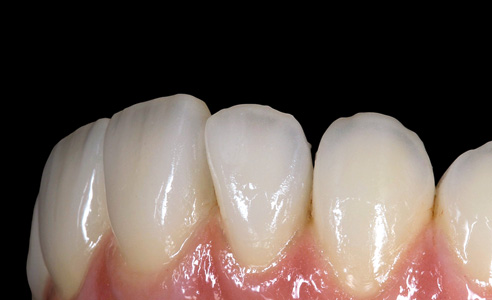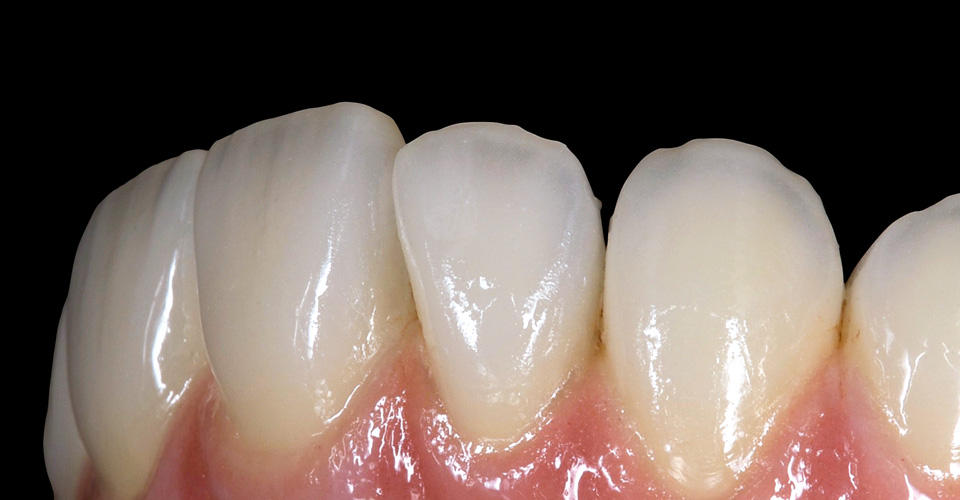Partially veneered, implant-supported bridge of VITA YZ HT
Complex, implant-supported whole-jaw restorations are a particular challenge for dentists and dental technicians. In the current case, a vestibularly partially veneered bridge restoration was made for the edentulous upper jaw from the highly translucent zirconia VITA YZ HT and the veneering ceramic VITA VM 9 (both VITA Zahnfabrik, Bad Säckingen, Germany) and screwed to six implants. Vincent Fehmer, Master Dental Technician (Geneva, Switzerland), explains the fabrication of the restoration step-by-step, which was created in collaboration with the dentist, Dr. Eric van Dooren.
1. Initial situation
A 72-year-old patient presented with insufficient total prostheses in the upper and lower jaw. For esthetic and functional reasons, he desired new, secure restorations. Six implants were inserted into the upper and lower jaw bones as prosthetic pillars. The lower jaw could be rehabilitated with a screwed-in resin restoration. The opposing jaw was now to be supplied with a highly esthetic, partially veneered zirconia bridge.
2. Planning and design
An initial setup with an idealized tooth arrangement was fixed by means of a silicone key and provided the required prosthetic orientation during the course of treatment. After scanning the maxillary mandibular setup, a trial milling of temporary resin intraorally revealed the occlusal relations to the integrated mandible. After the bite registration, the functional contacts only had to be reinforced by wax-up in the molar area. The optimized arch was scanned and served as the basis for computer-aided design with the inLab software15.1 (Sirona Dental, Bensheim, Germany).
3. CAM fabrication and veneering
"Previously, frameworks made of opaque zirconia had to be completely veneered in order to achieve an esthetic restoration. Today, the highly translucent zirconia VITA YZ HT, in combination with the staining fluids VITA YZ HT SHADE LIQUID, allows me to create a 'fully anatomical' milled bridge restoration in 80% to 90% of cases," explains Vincent Fehmer. Only a minimal vestibular veneering with VITA VM 9 should be necessary for a true-to-nature color and light play. The functional advantage: "Thanks to the thin veneering layers, the chipping risk is automatically reduced."
4. Integration and conclusion
The completed bridge construction was screwed into the upper jaw, and the screw channels were sealed with composite. The anatomically minimized substructure made of highly translucent zirconia facilitated fast and esthetic fabrication. The upper and lower jaws harmonized with each other despite the different materials. The patient was delighted with his new, securely-positioned restoration, and along with the dental technicians and the treatment provider, was completely satisfied with the result.
Report 08/16



